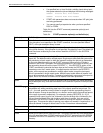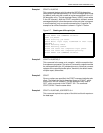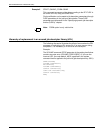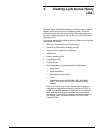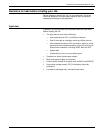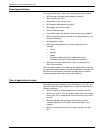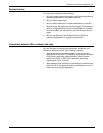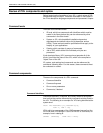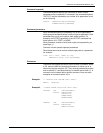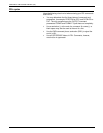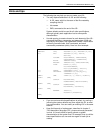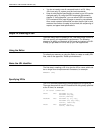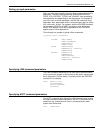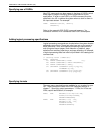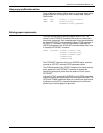
CREATING A JOB SOURCE LIBRARY (JSL)
3-6 XEROX DOCUPRINT 180 LPS PDL REFERENCE
Review of PDL components and syntax
Before beginning the formatting of your JSL, a quick review of PDL
components may be helpful. These are discussed in more detail in
the “Print description language components and processes” chapter.
Command levels
There are four command levels:
• ID level, which has commands with identifiers which must be
coded in the library before they can be referenced by other
commands in the other levels.
• System or JDL, which establish installation-dependent
requirements and default values for job descriptor entries
(JDEs). These are best used for specifications that apply to the
majority of your applications.
• Catalog, which consists of groups of commands
• Job or JDE, which define how individual print jobs are
processed.
A job descriptor library (JDL) command must precede all of the
levels. It provides the name of the JDL, which is the compiled or
"object" form of the JSL.
ID, system, and catalog level commands can be referenced by
commands following them. For this reason, these commands must
be numbered or named.
Command components
These are the components of a PDL command:
• Command identifier
• Command keyword
• One or more parameters
• Comments, if desired
Command identifiers
Command identifiers, if required, are usually coded at the system
level so that they can be referenced by commands at other levels in
the JSL. The following is an example of a VFU being identified at the
system level:
VFU1: VFU ASSIGN=(1,1),ASSIGN=(2,5),
TOF= 1, BOF = 66;
VFU= vfu-id as a parameter of the LINE command can call out the
SYSTEM level VFU identifier 1 at the CATALOG or JOB levels, for
example, here in catalog B:
CATAB: CATALOG; LINE VFU = VFU1;



